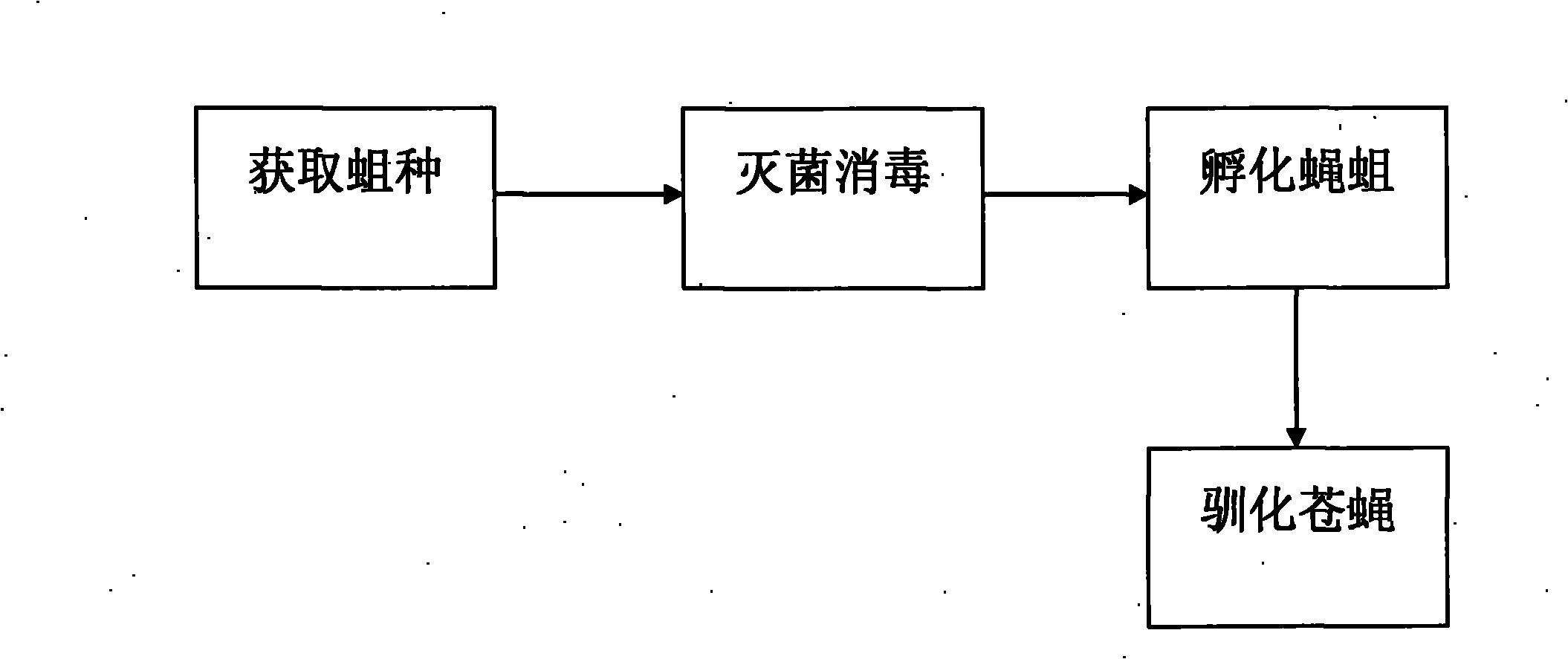Method for domesticating wild flies
A technology of flies and fly maggots, applied in animal husbandry, etc., can solve problems such as low egg laying rate, death, and difficulty in artificial feeding
- Summary
- Abstract
- Description
- Claims
- Application Information
AI Technical Summary
Problems solved by technology
Method used
Image
Examples
Embodiment Construction
[0009] The technical characteristics of the present invention will be further described below in conjunction with the accompanying drawings and specific examples.
[0010] Fish out the seed maggots from the toilet with a fishing tool, clean them and put them into the prepared feed. After 2 to 3 days, the fly maggots grow up and mature. Collect the mature fly maggots and put them in a large plastic basin, sprinkle with bran, and cover with braid. bags to prevent escape. After 2 to 3 days, the fly maggots turn into red pupae, and the pupae are screened out with a sieve, sterilized with potassium permanganate solution for 10 minutes, and then taken out and dried in the air. Put it back into the plastic pot, sprinkle a little bran, and continue to hatch. The first batch of hatched flies should be fed with the best feed in a quiet environment to increase the egg laying rate. When the offspring of the first batch of flies start to hatch, the kind of flies should be driven out of t...
PUM
 Login to View More
Login to View More Abstract
Description
Claims
Application Information
 Login to View More
Login to View More - R&D
- Intellectual Property
- Life Sciences
- Materials
- Tech Scout
- Unparalleled Data Quality
- Higher Quality Content
- 60% Fewer Hallucinations
Browse by: Latest US Patents, China's latest patents, Technical Efficacy Thesaurus, Application Domain, Technology Topic, Popular Technical Reports.
© 2025 PatSnap. All rights reserved.Legal|Privacy policy|Modern Slavery Act Transparency Statement|Sitemap|About US| Contact US: help@patsnap.com


